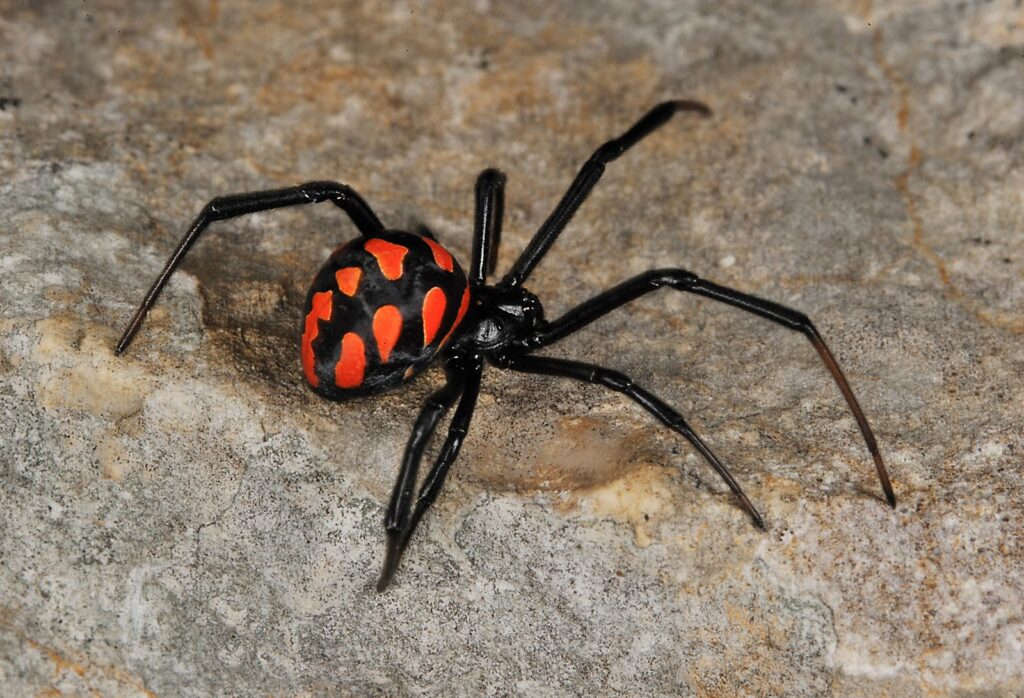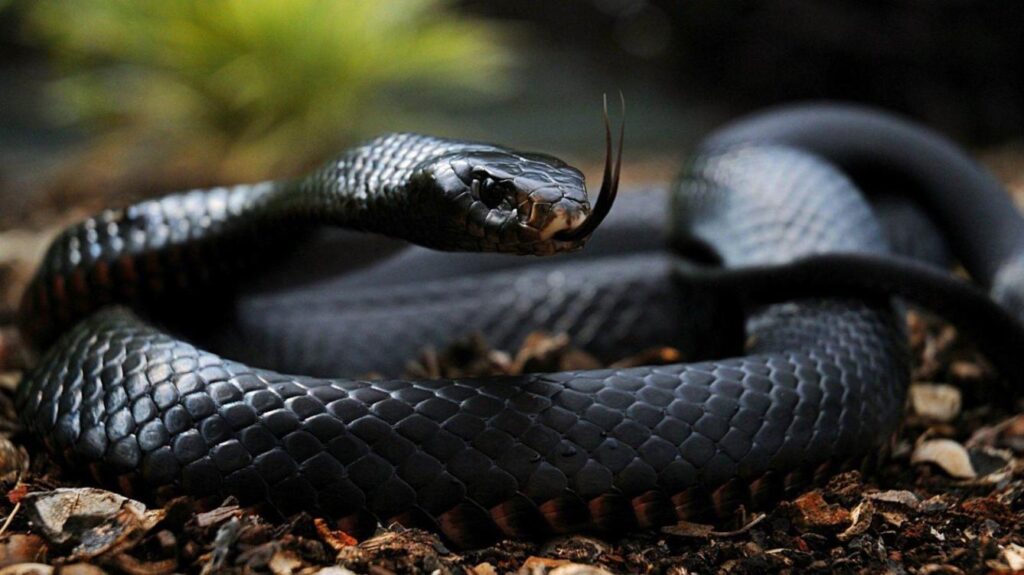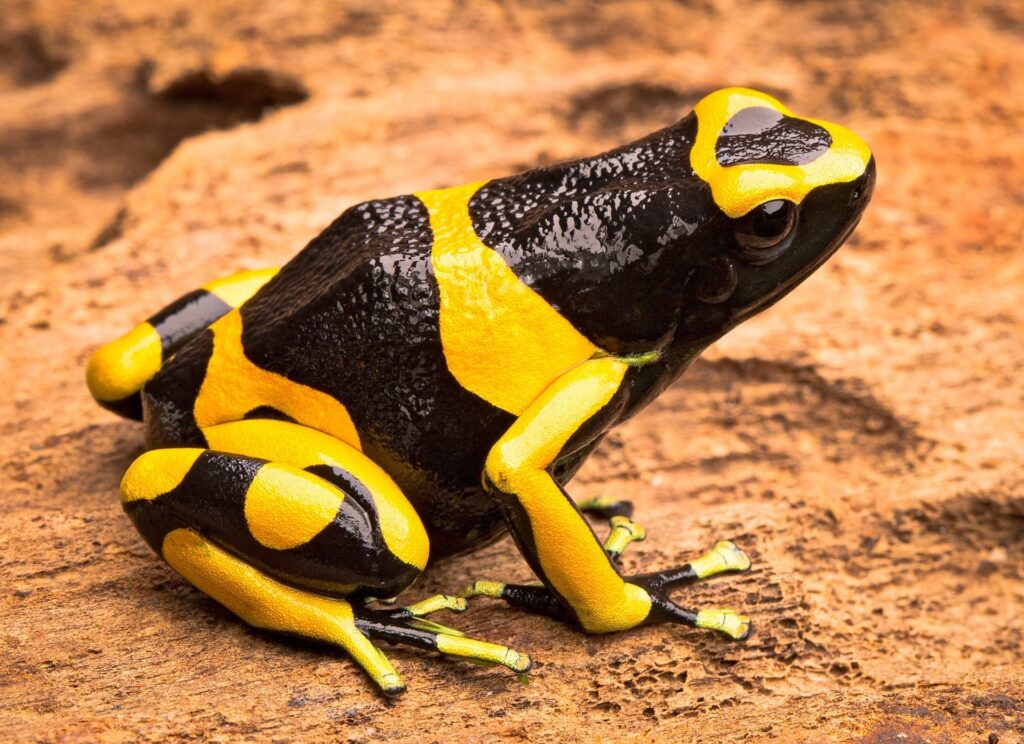They are not the biggest, nor the strongest, they are even small and seem fragile. If they barely manage to notice with their bright colors that they have something in store for anyone who dares to disturb them. Throughout the planet there are hundreds of animals that with a minimum dose of their poison can demonstrate their lethality. To learn more about the Most Venomous Animals in the World, we invite you to continue with this captivating reading.

The Most Venomous Animals in the World
Certain animals cause us undeserved fear, but we must take care of others. There are many people who have fears or phobias towards different species of animals or insects; for example, arachnophobia or spider phobia. Sometimes this fear is caused by the appearance that some of these animals show, such as their huge teeth or their strange countenance.
There are animals that we should be afraid of and that we should avoid as soon as possible, since their poison could be deadly. Creatures that may appear harmless, but hide toxins that can cause an agonizing death. Let us bear in mind that for any animal, the inoculation of poison implies an effort, an energy expenditure and even a recovery period in which they are vulnerable. Although for the animal it is only a defense mechanism, the poison can severely affect you and lead you directly to death.
Which animals should we take care of?
What characteristics make these species so feared? Below we share a review of some of the most poisonous animal species.
Beaked Sea Serpent
Usually, when we think of a snake, we think of the typical terrestrial snakes such as the cobra or the python. However, there are also sea snakes that have the ability to end the life of a man in a matter of minutes. An example of them is the beaked sea snake or “Enhydrina schistosa”, which is found in the waters of Southeast Asia.
It can reach a length of up to 1,5 meters and feeds primarily on catfish, although it can also gobble up puffer fish and eventually other species of fish or squid. With just 1,5 milligrams of poison it can end the existence of a person. Frequently this species tends to annihilate those human beings with whom it comes into contact in the fishing nets.
black widow spider
The black widow is one of the most popular arachnids and owes its fame to its enormous danger. It is part of the genus Latrodectus, which includes 31 varieties recognized as poisonous spiders, this being the most lethal. Black widows are usually very solitary and nocturnal spiders. They only show their sociability when mating. It practices cannibalism, since after mating it eats the male, from which its name derives. In certain cases the male manages to slip away.
The female specimens are the most dangerous as indicated by the red markings that adorn their black body. Its poison immobilizes the central nervous system and causes very intense pain in the muscles. Its effects can be extremely serious and even fatal if prompt medical attention is not received. There is an antidote called Aracmyn that counteracts the poison in 15 minutes.
sydney spider
The Sydney spider is one of the deadliest arachnids on the planet. It has large fangs and bags filled with poison. The males grow up to 25 millimeters long, while the females grow up to 35. They are considered one of the most toxic species and their bite causes hyperthermia and acute fever, deep muscle pain and cardiorespiratory arrest that causes the death of the victim.
Armadeira Spider
The armadeira spider or Brazilian (or banana) wandering spider has one of the most powerful poisons known. It is an extremely large variety of arachnid. It is also very aggressive, and while most spiders run away when they find a predator, this one faces its enemies. It is found in South America, specifically in Brazil, and its bite is deadly, as it causes tachycardia, muscle pain, nausea and vomiting, sweating, cloudy vision, etc., and can cause death in less than thirty minutes.
Scorpion
There are more than 1.400 known species of this animal spread all over the globe and they adapt perfectly to different climates and diets. Since they are an easy target for owls, lizards or snakes, the scorpion has evolved some defense mechanisms, the most striking being its sting. Most of them do not represent a danger to humans despite the fact that some, such as those that make up part of the Buthidae family, are extremely dangerous. They inoculate a neurotoxin so powerful that death can occur in just 5 or 6 hours.
Brown Recluse Spider
Also known as Loxosceles reclusa, this arachnid can be lethal depending on the mass of the individual it attacks. Its venom acts by dissolving skin tissue while producing cell death that can lead to amputation. Its effect is 10 times more powerful than sulfuric acid.
Marble Shell Snail
Few people think that a snail can kill, but the venom of this creature is one of the deadliest. It is located primarily in the Indian Ocean, and just one drop of this snail's venom is enough to kill up to 20 human adults. They usually use their venom to capture their prey and rarely encounter humans. The venom can cause loss of coordination, trouble breathing, heart failure, double vision, coma, or death. There is no antidote that neutralizes its bite.
King Cobra
The cobra is one of the most popular snakes, largely because of its characteristic pose when it is ready to attack and manages to reach a certain height. It is native to Asia, particularly Thailand. It is one of the largest venomous snakes, and its bite carries a huge amount of neurotoxins, and causes a lot of pain. Added to this, their size allows these reptiles to launch their bite from a great distance.
Blowfish
The puffer fish may seem harmless to us, but it is certainly extremely dangerous. It is found in the waters surrounding Japan, China and the Philippines and Mexico, and carries a toxin called tetrodotoxin that causes a series of effects in humans such as: nausea, headache, speech and coordination disorders, tremors, paralysis, cardiac arrhythmia and even death. The puffer fish, despite being poisonous, can also be eaten.
Arrowhead Frog
The arrowhead frog is also called the golden dart frog, and it is the most poisonous amphibian in the world, exuding poison that can kill about 1.500 humans. You can get them in South America and Central America and in ancient times the aborigines soaked the tips of their arrows with the poison, which made them more deadly.
Some of these frogs are brilliantly colored, making them truly exotic. But, in contrast to this pleasant image, its glands also secrete a poison called batrachotoxin, a toxin that prevents nerve signals from reaching the muscles, causing paralysis and death.
taipan snake
Snakes are one of the most feared animals since they are usually poisonous creatures. The Taipan snake is one of the most poisonous as its toxins are deadly. It is found in Australia, and the neurotoxic action of its bite can kill a person in about 45 minutes. Fortunately, there is an antidote, so seek immediate medical attention.
The effects that the taipan snake can cause are disproportionate, since it can kill 100 adults as well as 250.000 mice. Their venom is 200 to 400 times more toxic than most rattlesnakes.
Black mamba
The black mamba is located in Africa and is the deadliest on that continent. It usually measures about two and a half meters long, although certain specimens can reach four meters. Its skin color varies between green or metallic gray. It is very territorial and prior to its attack it warns by emitting sounds. Its bite inoculates about 100 milligrams of poison, being 15 already deadly for any human. His mouth is black inside getting his name from there. It is the fastest snake in the world and can reach speeds of up to 20 kilometers per hour.
stone fish
The stonefish is the most poisonous actinopterygian known, owing its name precisely to the appearance it exhibits, similar to a rock. It tends to camouflage itself at the bottom of the sea, blending in with the rocks. Contact with the spines of its fins is lethal to humans since its venom is similar to that of the cobra. The pain is extremely intense and painful for those who suffer it. Its toxins produce inflammation, paralysis and death. There is an antidote to counteract it but you must proceed quickly.
death worm
The death worm is a caterpillar called lonomia obliqua, which can be found in Brazil, although it can also be found in other areas of the Amazon. Its presence has also been reported in Argentina. The discomfort begins as soon as the person comes into contact with the caterpillar, being very similar to food poisoning followed by a severe headache. After 8 hours you can notice the appearance of bruises, and in a few days the person perishes due to internal bleeding.
Blue Ringed Octopus
This animal does not have a large size, since it measures the same as a golf ball, its rings warning us of its great danger. But this tiny octopus or cephalopod is extremely poisonous, and is one of the deadliest species that can be found in the sea. They are found in Australia, Japan, Indonesia, the Philippines, and New Guinea. The poison of this creature can cause blindness, nausea, immobility and respiratory failure, as well as death, and there is no antidote for the poison it carries, which is enough to take the lives of about 26 people.
Sea wasp
It is a large jellyfish that can be up to 3 meters long and weigh 2 kilograms. It has 40 to 60 tentacles full of poison that can end the lives of individuals who cross its path, which is why it is considered one of the most poisonous animals. It can be found in the waters of Australia. As they age, their poison becomes more lethal, being able to annihilate a person in just 3 minutes.
Golden Dart Frog
This is the most poisonous animal on the planet. It exhibits a unique and attractive color, but the simplest contact with this frog can cause death. Indeed, the amphibian is not required to be present, since the toxin continues to act externally. Dogs have been reported to have died after coming into contact with a surface on which this creature had perched. It can generate up to 28 grams of poison through its skin, which is enough to kill 1.500 people.
Other interesting articles that we recommend are:




